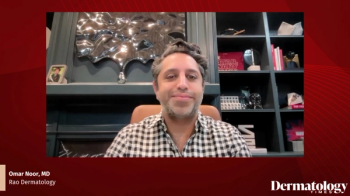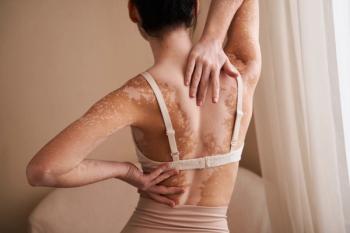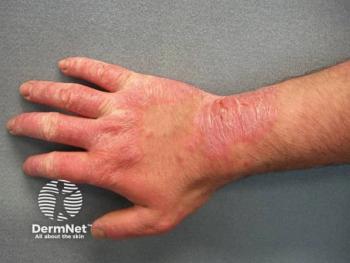
Lurie Children’s Becomes First Treatment Center for Zevaskyn Gene Therapy in Patients with RDEB
Key Takeaways
- Zevaskyn, a gene therapy for RDEB, modifies skin cells to express type VII collagen, addressing the genetic cause of the disease.
- Lurie Children's Hospital is the first U.S. center to offer Zevaskyn, with treatments starting in August 2025.
ZEVASKYN, the first FDA-approved gene therapy for wounds in recessive dystrophic epidermolysis bullosa, is now available at Lurie Children's Hospital.
The activation of Lurie Children’s as the inaugural treatment site follows the April 29, 2025, FDA approval of Zevaskyn for both pediatric and adult patients with RDEB.2 Developed by Abeona Therapeutics, Zevaskyn genetically modifies a patient’s own skin cells to express functional type VII collagen (COL7), the protein missing or dysfunctional in RDEB. These corrected cells are then grown into sheets and grafted onto chronic wounds.
Until now, treatment for individuals with RDEB has been limited to wound care, infection prevention, and symptom management, with no prior approved therapy addressing the underlying genetic cause.
How Zevaskyn Works
Zevaskyn is a 1-time gene-modified cellular therapy that uses autologous (self-derived) keratinocytes corrected via a retroviral vector to express full-length COL7. These cells are expanded into epidermal sheets that can be surgically applied to open wounds. The therapy is intended to promote durable wound healing, reduce pain and risk of infection, and improve the overall quality of life for patients living with RDEB.
Clinical trials showed promising results: Zevaskyn-treated wounds demonstrated significantly improved healing and durability compared to untreated or placebo-controlled wounds.3
Lurie Children's: A Leader in EB Care
Lurie Children’s has a longstanding history of excellence in treating genetic skin disorders, including epidermolysis bullosa (EB). For over 30 years, the institution has been recognized as a center of excellence, caring for more than 150 children and adults with EB. It is also a core member of the EB Clinical Research Consortium and regularly conducts innovative translational research.1
Amy Paller, a board-certified dermatologist, an expert in EB care, and chair of dermatology at Northwestern University Feinberg School of Medicine, emphasized the significance of this milestone.
"Lurie Children’s is proud to be the first qualified treatment site in the US to offer this groundbreaking treatment for RDEB patients," Paller said in a news release.1 "Grafting gene-corrected cellular sheets onto chronically open wounds of patients with RDEB promises the potential to provide long-term healing of wounds, reduction in pain and reduced risk of infection."
Lurie Children’s expects to begin biopsying the first patient in July 2025, with treatment projected to follow in August 2025. The hospital has already completed the required start-up activities to identify and schedule patients for treatment.
Patient Access and Support
To help families navigate the complexities of accessing Zevaskyn, Abeona has launched Abeona Assist, a comprehensive support program designed to provide patient navigation, insurance and financial assistance guidance, and travel and logistical coordination for eligible families.
Patients, caregivers, and clinicians can access more information or initiate contact through
Lurie Children’s is the first of what Abeona hopes will be multiple qualified treatment centers across the country, making Zevaskyn more accessible to RDEB patients nationwide.
References
- Abeona Therapeutics and Lurie Children's open first center for ZEVASKYN gene therapy to treat wounds in painful skin disorder. News release. Abeona Therapeutics Inc. May 14, 2025. Accessed May 15, 2025.
https://investors.abeonatherapeutics.com/press-releases/detail/306/abeona-therapeutics-and-lurie-childrens-open-first - US FDA approves zevaskyn (prademagene zamikeracel), the first and only cell-based gene therapy for patients with recessive dystrophic epidermolysis bullosa (RDEB). News release. Abeona Therapeutics. April 29, 2025. Accessed May 15, 2025.
https://investors.abeonatherapeutics.com/press-releases/detail/303/u-s-fda-approves-zevaskyn-prademagene-zamikeracel - Abeona Therapeutics announces FDA acceptance of BLA resubmission of pz-cel for the treatment of recessive dystrophic epidermolysis bullosa. News release. Abeona Therapeutics. November 12, 2024. Accessed May 15, 2025.
https://investors.abeonatherapeutics.com/press-releases/detail/294/abeona-therapeutics-announces-fda-acceptance-of-bla
Newsletter
Like what you’re reading? Subscribe to Dermatology Times for weekly updates on therapies, innovations, and real-world practice tips.



















